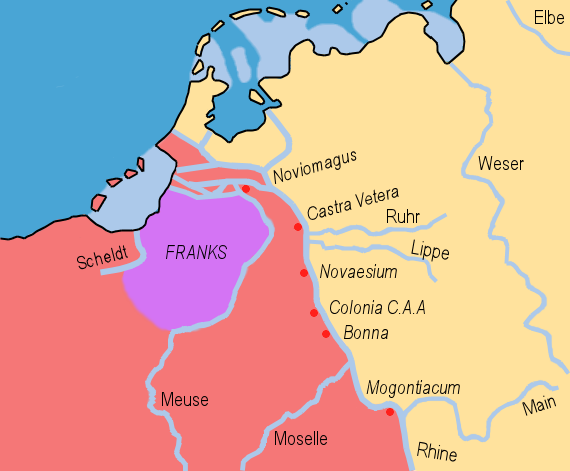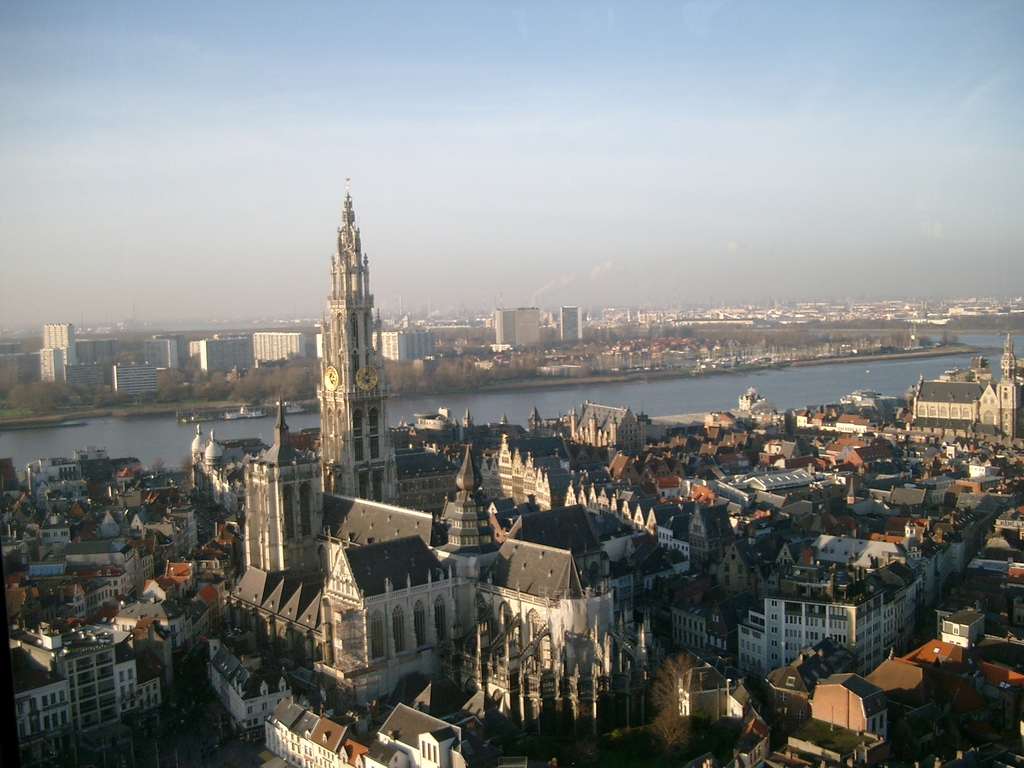|
Toxandria
Texandria (also Toxiandria; later Toxandria, Taxandria), is a region mentioned in the 4th century AD and during the Middle Ages. It was situated in the southern part of the modern Netherlands and in the northern part of present-day Belgium, currently known as Campine (Kempen in Dutch). Name The tribal name Texandri, which may be related to the region, is mentioned as ''Texand(ri)'' by an inscription dated 100–225 AD, as ''Texuandri'' by Pliny (1st c. AD),Pliny. ''Naturalis Historia''4:106/ref> and perhaps as ''Texu'' on an inscription from Romania dated 102/103 AD. The variant form ''Toxiandria'' is only attested once in a 9th-century manuscript of Ammianus Marcellinus' ''Res Gestae'' (ca. 390) to designate the region, and the variant ''Taxandria'' occurs five times in 9th-century sources, and also in later documents. The inconsistencies in spelling may be explained by dittography (errors by copyists), or by the fact that the old form ''Texandri'' had fallen out of usage. The ... [...More Info...] [...Related Items...] OR: [Wikipedia] [Google] [Baidu] |
Salian Franks
The Salian Franks, also called the Salians (Latin: ''Salii''; Greek: Σάλιοι, ''Salioi''), were a northwestern subgroup of the early Franks who appear in the historical record in the fourth and fifth centuries. They lived west of the Lower Rhine in what was then the Roman Empire and today the Netherlands and Belgium. The traditional historiography sees the Salians as one of the main divisions of the Franks alongside the Ribuarians. Recent scholarship, however, has often questioned the ethnic significance of both these terms. Etymology Various etymologies are proposed. The ethnonym is unrelated to the name for the dancing priests of Mars, who were also called Salii. In line with theories that the Salians already existed as a tribe outside the Roman Empire, the name may have derived from the name of the IJssel river, formerly called ''Hisloa'' or ''Hisla'', and in ancient times, ''Sala'', which may be the Salians' original residence. Today this area is called Salland. ... [...More Info...] [...Related Items...] OR: [Wikipedia] [Google] [Baidu] |
Toxandria 919-1125
Texandria (also Toxiandria; later Toxandria, Taxandria), is a region mentioned in the 4th century AD and during the Middle Ages. It was situated in the southern part of the modern Netherlands and in the northern part of present-day Belgium, currently known as Campine (Kempen in Dutch). Name The tribal name Texandri, which may be related to the region, is mentioned as ''Texand(ri)'' by an inscription dated 100–225 AD, as ''Texuandri'' by Pliny (1st c. AD),Pliny the Elder, Pliny. ''Natural History (Pliny), Naturalis Historia''4:106/ref> and perhaps as ''Texu'' on an inscription from Romania dated 102/103 AD. The variant form ''Toxiandria'' is only attested once in a 9th-century manuscript of Ammianus Marcellinus' ''Res Gestae'' (ca. 390) to designate the region, and the variant ''Taxandria'' occurs five times in 9th-century sources, and also in later documents. The inconsistencies in spelling may be explained by dittography (errors by copyists), or by the fact that the old form ' ... [...More Info...] [...Related Items...] OR: [Wikipedia] [Google] [Baidu] |
Texandri
The Texandri (also Texuandri; later Toxandri, Toxiandri, Taxandri) were a Germanic people living between the Scheldt and Rhine rivers in the 1st century AD. They are associated with a region mentioned in the late 4th century as Texandria (also Toxiandria; later Toxandria, Taxandria), a name which survived into the 8th–12th centuries. Name Attestations The only inscription that convincingly mentions the name is dated 100–225 AD and gives the form ''Texand(ri)''. It was found on an altar in Brocolitia (Carrowburgh Fort) near Hadrian's Wall. A more uncertain inscription from Romania dated 102/103 AD reads ''Texu'', and they are also mentioned as ''Texuandri'' by Pliny (1st c. AD), which may suggest that the two forms ''Texuandri'' and ''Texandri'' co-existed already in the late-1st and 2nd centuries AD. The variant form ''Toxiandria'' is only attested once in a 9th-century manuscript of Ammianus Marcellinus' ''Res Gestae'' (ca. 390) to designate the region. The form ''Taxan ... [...More Info...] [...Related Items...] OR: [Wikipedia] [Google] [Baidu] |
Antwerp Province
) , native_name_lang = nl , settlement_type = Province of Belgium , image_flag = Flag of Antwerp.svg , flag_size = , image_shield = Wapen van de provincie Antwerpen.svg , shield_size = 120px , image_map = Provincie Antwerpen in Belgium.svg , coordinates = , subdivision_type = Country , subdivision_name = , subdivision_type1 = Region , subdivision_name1 = , seat_type = Capital , seat = Antwerp , leader_title = Governor , leader_name = Cathy Berx (CD&V) , area_total_km2 = 2,876 , area_footnotes = , population_total = 1,857,986 , population_footnotes = , population_as_of = 1 January 2019 , population_density_km2 = auto , blank_name_sec2 = HDI (2019) , blank_info_sec2 = 0.945 · 4th of 11 , website = Antwerp Provinc ... [...More Info...] [...Related Items...] OR: [Wikipedia] [Google] [Baidu] |
Julian (emperor)
Julian ( la, Flavius Claudius Julianus; grc-gre, Ἰουλιανός ; 331 – 26 June 363) was Roman emperor from 361 to 363, as well as a notable philosopher and author in Greek. His rejection of Christianity, and his promotion of Neoplatonic Hellenism in its place, caused him to be remembered as Julian the Apostate in Christian tradition. A nephew of Constantine, Julian was one of few in the imperial family to survive the purges and civil wars during the reign of Constantius II, his cousin. Julian became an orphan as a child after his father was executed in 337, and spent much of his life under Constantius's close supervision.''Oxford Dictionary of Late Antiquity'', "Julian the Apostate", p. 839 However, the emperor allowed Julian to freely pursue an education in the Greek-speaking east, with the result that Julian became unusually cultured for an emperor of his time. In 355, Constantius II summoned Julian to court and appointed him to rule Gaul. Despite his inexperienc ... [...More Info...] [...Related Items...] OR: [Wikipedia] [Google] [Baidu] |
Campine
The Campine (French ) or De Kempen ( Dutch ) is a natural region situated chiefly in north-eastern Belgium and parts of the south-eastern Netherlands which once consisted mainly of extensive moors, tracts of sandy heath, and wetlands. It encompasses a large northern and eastern portion of Antwerp Province and adjacent parts of Limburg in Belgium, as well as portions of the Dutch province of North Brabant (area southwest of Eindhoven) and Dutch Limburg around Weert. Today the Campine is becoming a popular touristic destination. Old farms have been transformed into bed-and-breakfast hotels, the restaurant and café business is very active, and an extensive cycle touring network has come into existence over the past few years. Part of the Campine is protected as the '' Hoge Kempen Nationaal Park'' (High Campine National Park). It is located in the east of the Belgian province Limburg, between the city of Genk and the Meuse valley and was opened in March 2006. Covering al ... [...More Info...] [...Related Items...] OR: [Wikipedia] [Google] [Baidu] |
Sint-Truiden
Sint-Truiden (; french: link=no, Saint-Trond ; li, Sintruin ) is a city and municipality located in the province of Limburg, Flemish Region, Belgium, and has over 41,500 inhabitants, which makes it one of the largest cities in Limburg. The municipality includes the former communes (now ''deelgemeenten'') of Aalst, Brustem, Duras, Engelmanshoven, Gelinden, Gorsem, Groot-Gelmen, Halmaal, Kerkom-bij-Sint-Truiden, Melveren, Metsteren, Ordingen, Runkelen, Velm, Wilderen, and Zepperen. The city is in the centre of Belgium's fruit-producing region, ''Haspengouw'' (Hesbaye), and is renowned for its pears, apples (Jonagold), and sweet cherries. History Origins and Golden Age The municipality formed around an abbey founded by St. Trudo, a Frankish nobleman, in the 7th century. Legend has it that as a boy, Trudo was playing while building a small church with some rocks. When a woman scornfully kicked over the rocks she was struck by sudden blindness. Trudo cured her from this ... [...More Info...] [...Related Items...] OR: [Wikipedia] [Google] [Baidu] |
Laakdal . Laakdal was founded in 1977 out of a merger of the towns Veerle, Eindhout and Vorst. The municipality now comprises the towns of , , , and Vorst-Meerlaar (also known as Klein-Vorst). In 2021, Laakdal had a total population of 16,293. The total area is 42.48 km².
The municipality has 6 neighbouring towns. Clockwise on the compass these are: Geel, Meerhout, Ham, Tessenderlo, Scherpenheuvel-Zichem and Herselt.
Laakdal () is a municipality located in the Belgian province of Antwerp Antwerp (; nl, Antwerpen ; french: Anvers ; es, Amberes) is the largest city in Belgium by area at and the capital of Antwerp Province in the Flemish Region. With a population of 520,504, References External links *[...More Info...] [...Related Items...] OR: [Wikipedia] [Google] [Baidu] |
Dommel
The Dommel is a small river in Belgium and the Netherlands, left tributary of the Dieze. It is 120 km long, of which 85 km in the Netherlands. The Dommel takes in water from the Keersop, Tongelreep, Run, Gender and Kleine Dommel streams and merges at 's-Hertogenbosch with the Aa stream to form the river Dieze, which subsequently flows towards the Meuse. The main cities and towns along the Dommel's course are Peer, Neerpelt, Valkenswaard, Dommelen, Eindhoven, Son en Breugel, Sint-Oedenrode, Boxtel, Sint-Michielsgestel and 's-Hertogenbosch. Drainage basin The drainage basin of the Dommel belongs to that of the Meuse. To the west of is the basin of the Donge, which also belongs to that of the Meuse. To the south the basin of the Dommel borders that of the Schelde. To the east is that of the Aa. Further to the south a number of rivers flow into the Meuse much further upstream. History Former glory The Dommel often looks like a brook nowadays, but it has many geographical ... [...More Info...] [...Related Items...] OR: [Wikipedia] [Google] [Baidu] |
Limburg (Belgium)
Limburg ( nl, Limburg, ; li, Limburg or ''Wes-Limburg'' ; french: Limbourg, ) is a province in Belgium. It is the easternmost of the five Dutch-speaking provinces that together form the Region of Flanders, one of the three main political and cultural sub-divisions of modern-day Belgium. Limburg is located west of the Meuse ( nl, Maas), which separates it from the similarly-named Dutch province of Limburg. To the south it shares a border with the French-speaking province of Liège, with which it also has historical ties. To the north and west are the old territories of the Duchy of Brabant. Today these are the Flemish provinces of Flemish Brabant and Antwerp to the west, and the Dutch province of North Brabant to the north. The province of Limburg has an area of which comprises three arrondissements (''arrondissementen'' in Dutch) containing 44 municipalities. Among these municipalities are the current capital Hasselt, Sint-Truiden, Genk, and Tongeren, the only Roman c ... [...More Info...] [...Related Items...] OR: [Wikipedia] [Google] [Baidu] |
North Brabant
North Brabant ( nl, Noord-Brabant ; Brabantian: ; ), also unofficially called Brabant, is a province in the south of the Netherlands. It borders the provinces of South Holland and Gelderland to the north, Limburg to the east, Zeeland to the west, and the Flemish provinces of Antwerp and Limburg to the south. The northern border follows the Meuse westward to its mouth in the Hollands Diep strait, part of the Rhine–Meuse–Scheldt delta. North Brabant has a population of 2,562,566 as of November 2019. Major cities in North Brabant are Eindhoven (pop. 231,642), Tilburg (pop. 217,259), Breda (pop. 183,873) and its provincial capital 's-Hertogenbosch (pop. 154,205). History The Duchy of Brabant was a state of the Holy Roman Empire established in 1183 or 1190. It developed from the Landgraviate of Brabant and formed the heart of the historic Low Countries, part of the Burgundian Netherlands from 1430 and of the Habsburg Netherlands from 1482, until it was ... [...More Info...] [...Related Items...] OR: [Wikipedia] [Google] [Baidu] |








